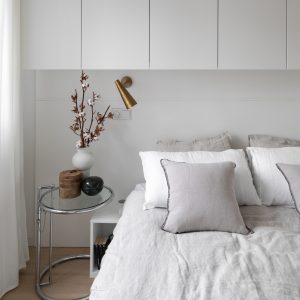
Modern style is characterized by clean lines and an absence of adornments. It often features natural materials and a neutral color palette. Despite the lack of visual flair, modern design offers several benefits. It can be more cost-effective, easier to maintain, and more environmentally friendly than traditional decor. It also tends to be less prone to fads and trends, making it more timeless than its counterpart.
One of the most important things to consider when designing a modern space is the color palette. The right shades can set the tone for the entire room, creating a cohesive and welcoming feel. To get started, choose a few staple colors and experiment with them in different areas of the home. This will help you determine if you prefer a more monochromatic scheme or a broader palette.
For example, a neutral color scheme with white walls can create an airy and open feeling in your kitchen. While a light gray or blue palette could work in a living room. Then, use a bold pattern or texture to add dimension and contrast.Sktong
On the other hand, a warm and inviting traditional design can bring comfort and a sense of history to your home. This style takes cues from 18th and 19th century England and Europe, incorporating classic art and antiques into the mix. Furniture styles like wingback chairs, queen Anne furniture, and cabriole legs are all typical of this design.
The most common way to combine modern and traditional is through transitional design. This style is a hybrid of the two, and it is all about balancing the past with the future. For instance, you can incorporate classic elements such as wainscoting and crown molding with contemporary furniture and unique overhead lighting.
This can be an excellent choice for the bedroom. It allows you to keep the soft, classic feel that traditional design is known for but also provides a comfortable escape from the stresses of everyday life.
Another option is to design a modern-traditional bathroom. In this type of room, you can feature a more modern-looking shower and tub while adding more traditional accents like a decorative sconce or detailed molding on the wall. This can create a look that is reminiscent of the past without being too dated.
One last tip for creating a modern-traditional design is to use a combination of modern and traditional furniture. For example, you can pair a contemporary sectional with an antique coffee table or a modern vase with a traditional planter. You can also add more traditional details like a decorative mirror or a unique framed portrait to a modern living room. Just be sure to balance and synchronize these elements to avoid overstyling your home.



